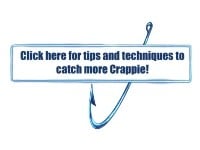But being a rigging bombardier doesn’t require magic or genius. Triangulating, in this case, is simple. As you move deeper, use a larger weight. As the wind picks up, go with a larger weight. And as the size of the bait increases – well, you get the idea.
“There is no doubt that it’s a proven system, and the most efficient live-bait delivery system possible,” says legendary walleye pro Ted Takasaki. “Success is really about location, followed by time of year and bait selection. Carefully considering these ups your odds. The key to success with rigging is placing live bait precisely on a small target below the boat, and to do that it’s better to use a weight that is too heavy than one that’s too light.
“What are bass anglers good at? Accurate pitching to visible targets. What are walleye anglers good at? Putting a sinker in a 12-inch circle 25-feet down. That’s why sinker size and type is critical.”
Leaders testing 4- to 8-pounds and 4 feet long (from swivel to hook) are optimum most of the time. Takasaki primarily rigs with two types of sinker from late summer on:
Lindy Walking Sinkers—the most popular rigging weights ever—and Lindy Rattlin’ No-Snagg Sinkers.
“Lindy rigs really shine on main-lake points and humps from late summer through fall,” he said. “They maintain bottom contact to cover those critical transitions from hard to soft bottom that attract baitfish. Transitions are classic rigging zones.”
Transitions show up on sonar -- the hard bottom showing bright and dense while soft substrates return a weaker signal. But, like a good bombardier, Takasaki likes to feel those transitions, too.
“I use a sensitive, medium-light 7-foot rod with braided line on the reel,” he said. “Braid doesn’t stretch, so it transmits vibration and feel much better. I can tell when my bait is almost to that point where the bottom changes, helping me visualize exactly where it is.”
During late summer, walleyes move out on main-lake points and humps to depths of 20 to 25 feet. By late autumn, it’s common to find them 35 to 45 feet down.
“I’m following them down through fall with heavier sinkers,” Takasaki said. “If it’s windy, I go even heavier. Again – it’s better to go too heavy than too light. If you can’t feel bottom, go up a notch in weight.”
Weekend anglers often forget that rigging is not just dragging baits around on bottom. Takasaki likes to criss-cross transitions, moving from shallow to deep and back again.
“When I mark walleyes on the edge of a break at 25 feet, I snake from 27 to 23 and back down,” he said. “When the bait is moving away from them, going shallower or deeper, they react as if it’s trying to get away. I also lift the rig off bottom as it approaches a marked fish. If I’m using the Rattlin’ No Snagg Sinker, I’ll shake it. Raising it off bottom can trigger a reluctant fish. It’s that escape trigger -- making walleyes think the baitfish is moving away.
“Which brings up another important point,” Takasaki added. “After every bite, try to remember exactly what you were doing before it happened -- what direction you were going, how fast you were moving, how high or fast you lifted the bait. All those factors become pattern identification. That’s how you go on to catch 4, 5 or a dozen more. And once you catch a few fish off a point or hump, try to find the same kind of spots. That’s how you create patterns with Lindy rigs in the fall.”
When a fish bites, Takasaki feeds it line for at least 10 seconds while slowly maneuvering the boat toward the fish. “I’ll sometimes wait up to a minute,” he said. “If they really whack it, it’s 10 seconds. If they barely pick it up, I let them take it longer. I point the rod right at the fish and move the boat over it, slowly picking up slack. When I feel tension, I set. If I miss, I let them take it longer next time.”
Takasaki says that sinker selection is the key element that many anglers overlook for late-summer, early fall walleye rigging.
“It’s all about striking a balance between wind, depth, and bait size,” Takasaki said. “You want to stay relatively vertical in deep water. I mostly use ½- to 1-ounce weights late summer through fall because walleyes are 25 to 45 feet down. And I use bigger minnows in fall, lip hooked on size #4 to size #1 octopus-style hooks. You want to be right below the boat when you’re on fish, but you have to keep moving to find them, so you have to strike a balance that way, too. Once you start marking fish, zero in on that depth.”
Takasaki likes to pulse his trolling motor, changing direction and speed.
“That’s what triggers strikes when Lindy rigging -- slight variations in speed and direction,” he said. “And if I’m using that Rattlin’ No Snagg sinker, I lift, drop and shake it a lot to activate those rattles. That triggers strikes, too. But choose the shape and type of sinker based on bottom type, cover and conditions to be efficient. The classic Lindy Walking Sinker is perfect for sand, gravel and subtle transitions in clear water. The No Snagg shines around broken rock, wood and boulders, and the Rattlin’ No Snagg is right whenever the water is cloudy.
“Another bonus is that No Snagg wobbles a little bit, which moves the bait,” he added. “It twitches a leech, crawler, or minnow just a little bit. That’s all it can take to trigger a walleye.”
But don’t forget to zig-zag. And pause when you mark a fish. Lift the bait, too. And shake it. Just dragging bait around won’t cut it most days.




 Articles and Stories
Articles and Stories

















vBulletin Message